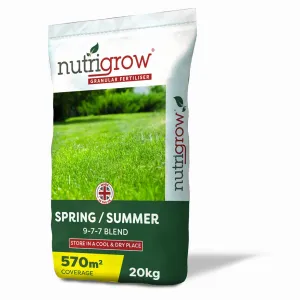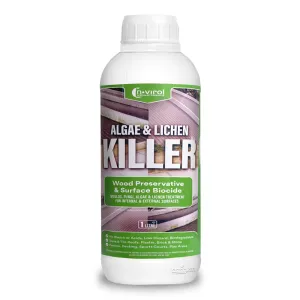An impressive front garden and lawns create an attractive welcome to our customer’s beautiful rural home, but the grass wasn’t always quite as lush, as our customer explains:
“Just over a year ago, the front lawns were really filled with moss and yarrow. I found Agrigem, ordered Iron Sulphate, which I applied, followed by Feed, Weed and Moss Killer.”
Iron Sulphate is a soluble iron fertiliser. It is usually used to toughen up and improve the colour of grass, as well as suppress moss growth in spring.
Moss hates iron, it has the effect of lowering the pH of soil to the point where it is unable to grow. It draws out the moisture so that the moss dries and turns black. Conversely, grass loves iron; it has a greening effect and encourages strong healthy growth.
Our customer continues: “I applied Feed, Weed & Moss Killer once I’d treated with Iron Sulphate and watched as the moss turned black. I honestly didn’t think I’d get the lawns back at this point but scarifying and patience paid off, and I now have vastly improved swathes of grass.”
Feed, Weed & Moss Killer as the name suggests, feeds the grass, as well as killing moss and a variety of common weeds. It helps fertilise the grass for a healthier, thicker looking lawn.
The following year, our customer used a blended lawn fertiliser – Nutrigrow Spring/Summer lawn fertiliser 9-7-7 blend. This blend delivers a balanced mix of nutrients over six weeks and helps to avoid rapid top growth. Prior to fertilising, our customer also used Dicophar to control emerging broad-leaved weeds, which worked perfectly, delivering rapid results.
A sweeping red block-paved driveway completes the appeal of the front gardens, nicely complementing the colour of the lawns. Nvirol Algae and Lichen Killer was used to generate a spotless and contaminant-free driveway.
However, our customer isn’t the only one enjoying the new weed and moss-free lawns. Unfortunately, a mole has taken up residence, though at the time of writing, damage is limited to the hedge line. The situation is being monitored carefully!
Once the front lawns are a little greener, our customer intends to tackle the much larger, and more challenging rear gardens.

Several mature specimen trees are dotted through extensive lawns
Signs of lawn weeds are more obvious in the so-far-untreated rear lawns. Clover patches seem to be enjoying the shade of the trees and our customer is considering using Dicophar again here but will require a method of spraying at scale to cover the entire garden.
Agrigem’s Senior Agronomist Ollie Wright made a few finishing touch suggestions for the front gardens. He says: “This customer has done a great job of transforming their lawns, and clearly understands the nutrient needs of grass.
“To improve the colour of the front lawns further, we’d recommend using a product like Photon. He could also give it a high nitrogen treatment with a phased release fertiliser. Nutrigrow 18-3.5-8+1Mg could work well here to reduce the risk of scorch.
“Finally, I’d recommend letting the grass grow a little longer, then cutting on a higher setting, never removing more than a third of the blade.”
For now, a relaxing enjoyable summer in the garden beckons. We’ll be back in the future to see how the rear garden treatments work, and to see if the mole has moved on!
Agrigem stocks a range of moss and weed killers depending on the surface type. Take a look at the range online.
If you have a garden story you’d like to share, or you’ve used our products to good effect, let us know, we’d love to hear your garden story. Email marketing@agrigem.co.uk









